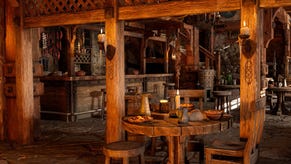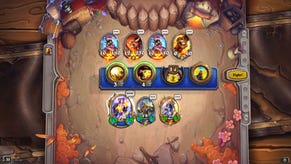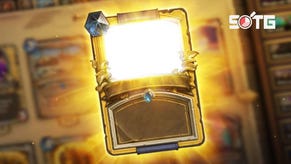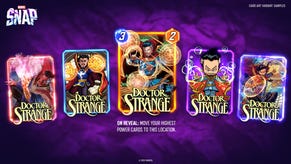Hearthstone - the collectible card game that could convert you
Blizzard's Warcraft-themed Magic rival is no Lost Vikings, but it might be the next best thing.
As a rule of thumb, I don't like cards, unless they're against humanity or possibly involve chips. I never played Magic: The Gathering or collected sports figure memorabilia, and always managed to quietly sneak out of any room where gin rummy was being played. I've also never played World of Warcraft. It's no stretch to say that I was less than enthused when Blizzard announced that its upcoming title, Hearthstone: Heroes of Warcraft, was a Warcraft-themed card game (for iPad as well as PC and Mac). And I was still holding out for a Lost Vikings reboot. Oh darn.
When Blizzard gave a live demo of Hearthstone at PAX East with a sportscaster-like dev quickly narrating what was going on, he might as well have been speaking Swahili to me. So imagine my surprise when this spin-off card combat game won me over after a scant 10 minutes.
How did it do such a thing? For one, Hearthstone is a shockingly simple game to learn how to play, for a title that involves over 300 cards. "Our general philosophy is that card games are awesome but there's a lot of barriers to entry, and if we could strip all those barriers to entry away we think an awful lot of people could be excited about the game," states Hearthstone's lead designer, Eric Dodds.

You begin by selecting a hero from one of nine classes - the usual WOW types like Hunter, Mage or Warrior - each with their own unique special units and attacks. The goal of the game is to defeat your opponent's hero, but you've got a whole mess of cards standing in your way.
Upon each turn you get a new mana point, dictating which cards you can play. So on your first turn you'll only have one mana point and by the ninth round you'll have nine and can really bring out the big guns - if you can survive that long. These replenish upon each turn, so there's no reason not to go all out. You can attack your opponent's hero at any time, but going straight for the kill is generally unwise, as they can lay forth an army in the interim to annihilate your forces.
It's an incredibly simple system to understand, with each card based around a mana cost, attack power and hit points, but mastering it is another story. I thought I was doing well in my first round until my opponent laid down a couple of mid-level cards with a "taunt" ability, meaning they needed to be attacked first before I could go after anyone else. While I was busy chipping away at their newly erected defenses, they brought out their heavy hitters and made mincemeat out of my poor Rogue.
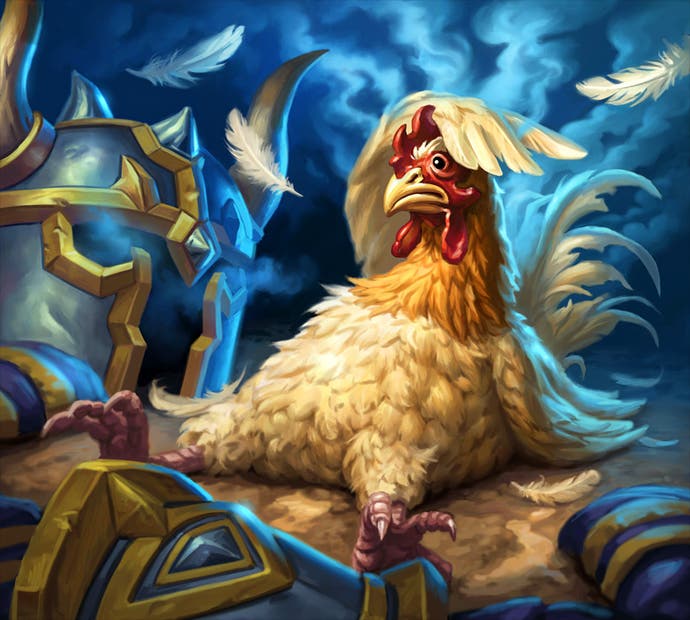
All heroes come with their own special attacks, so you can always opt for these for a couple of mana points. For example, the Hunter can shoot an arrow into the enemy hero at any time. These unique attacks are generally pretty weak, but they're a good backup when you've got a couple mana to spare and nothing in your deck looks that enticing.
While a novice such as myself is able to grasp the ruleset of Hearthstone right away, the deeper skills behind deck building elude me - but Blizzard has noobs like me covered there, too. While you can manually build a deck out of your card collection, you can also ask the game to suggest cards for you or simply have it fill out your deck on its own.
Although the virtual cards lose some sense of gravity by not existing in the meatspace, they make up for it in oomph. They smash and bash the opposition with thunderous strikes, and suddenly laying down actual cards looks pathetic - the way drunks going at one another in real life looks like a slap fight after movies have made it sound like every punch should deliver a bone-crushing blow.
There are other advantages to going digital, too. The most consumer-friendly is that players can "disenchant" cards that they have too many duplicates of, or that are specific to a class they're not focusing on. By doing this, they'll break them down to "arcane dust", which basically acts as a currency to buy new cards. No longer will you have to peruse the middle school cafeteria looking for someone to trade with. Also, what are you doing in a middle school cafeteria?

This digital format also allows Blizzard to shake up the formula a bit with a built-in timer. It's not particularly aggressive at a couple of minutes per turn, but it keeps things moving. "The reason for the timer is that if you're online against someone else, you don't want them to go, 'Goodness, I'm going to lose this game. I'm going to go out and see a movie,'" explains Dodds. "We want to make to make sure when you're playing the game it can be played in a reasonable amount of time." Dodds estimated this to be about 9-10 minutes - just enough time to sink in a round or two on the bus, I reckon.
Production director Jason Chayes notes that there will be some flexibility with the timer in different game modes. "You can play with your Battle.net friends, whether they're BattleTag or Real ID friends, and in that mode the timer plays a very different role. In fact, it won't necessarily be a timed match," he explains. While the exact options haven't been set, Chayes notes that various time limits are "something we're looking at for different modes of the game."

As of now, there's even a card in the deck that can speed up the time limit for your opponent. The developer isn't positive that this will make it to the final game, but the possibility remains. Another neat feature is the addition of "secret" face down cards that only present their effect when the enemy triggers it through some unknown action, like casting a healing spell or attacking your hero. Trying to deduce what your opponent's secret card is leads to a whole new level of strategy.
When I ask about cross-platform play, Blizzard says it's a feature that it really wants to add, but can't promise at launch. It seems likely, though. (The iPad edition of Hearthstone will also launch "as soon as possible after" the PC and Mac version of the game.)
Ultimately, Blizzard says it wants to create a collectible card game that "doesn't require a friend to get into." I can't speak for CCG veterans, who may find Hearthstone plays it safe, but based on my few rounds I found its easy-to-understand rule set, quick pace and free-to-play model certainly make it a welcoming low-level commitment for people who may otherwise enjoy card games but don't want to spend the time or money to get into them. More importantly, it won me over on a genre that, 24 hours earlier, I couldn't have cared less about. That doesn't happen every day.
This article is based on a trip to PAX East in Boston. Blizzard paid for travel and accommodation.



